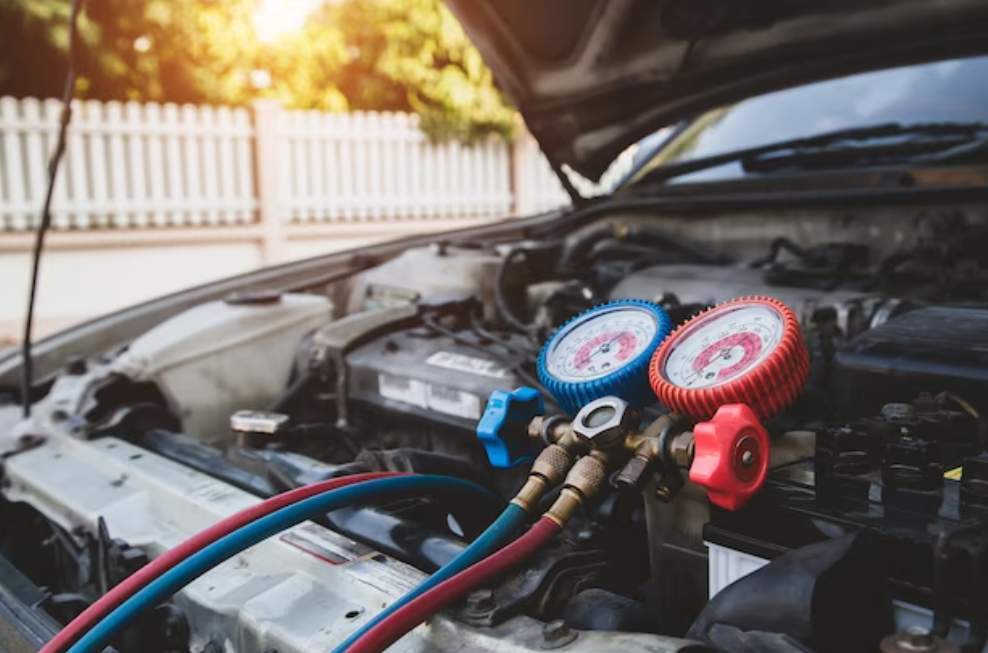How To Use An Impact Wrench?
Mastering the art of using an impact wrench can significantly enhance your efficiency and effectiveness in various mechanical and construction tasks. These powerful tools are indispensable for professionals and DIY enthusiasts alike, offering a swift and reliable solution for tightening or loosening nuts, bolts, and fasteners requiring substantial torque. However, understanding the proper techniques and safety measures is essential to harnessing the full potential of an impact wrench.
In this guide, we will delve into the essential steps and considerations for effectively using an impact wrench, empowering you to tackle a wide range of projects with confidence and precision.

What Is An Impact Wrench?
An impact wrench is a power tool designed to deliver high torque output with minimal exertion by the user. It achieves this by storing energy in a rotating mass and then delivering it suddenly to the output shaft. Impact wrenches are commonly used for tasks requiring a high amount of torque, such as loosening or tightening lug nuts on car tires, heavy-duty assembly, construction projects, and various industrial applications.
Key features and components of an impact wrench include:
- 1. Motor: can be powered by electricity (corded or cordless), compressed air (pneumatic), or hydraulics. Electric impact wrenches are commonly used in automotive and home improvement tasks, while pneumatic ones are prevalent in professional settings like auto repair shops and manufacturing.
- 2. Hammer Mechanism: This is where the stored energy is suddenly released to create a powerful impact. The hammer mechanism consists of rotating masses that build up energy and then deliver it in short bursts.
- 3. Anvil: The part of the tool that directly transfers the impact force to the socket or attachment. This is typically where you attach different sizes of sockets for various bolts and nuts.
- 4. Torque Control: Many impact wrenches have adjustable torque settings, allowing users to control the amount of force applied. This is crucial to avoid over-tightening or under-tightening fasteners.
Impact wrenches are highly valued for their efficiency and ease of use in scenarios that require high torque. They can significantly speed up tasks that would otherwise require substantial manual effort or less efficient tools like traditional wrenches.

Impact wrenches are versatile tools primarily used for tightening or loosening nuts, bolts, and other fasteners that require high torque. Common applications include automotive maintenance, construction projects, heavy equipment maintenance, industrial tasks, and DIY/home improvement projects. They are essential for tasks such as changing tires, engine repairs, structural assembly, framing, concrete formwork, manufacturing, mining, agriculture, assembly lines, maintenance and repair, fabrication, and various DIY tasks. Overall, impact wrenches save time and effort compared to manual methods by quickly and efficiently tightening or loosening fasteners.
To use an impact wrench effectively, gather these tools and materials:
Tools:
- Impact Wrench: Choose electric, pneumatic, or hydraulic based on your needs.
- Impact-rated sockets: high-strength sockets in various sizes for different nuts and bolts.
- Extensions and Adapters: Reach fasteners in tight spots.
- Air Compressor (for pneumatic wrenches): Ensure compatibility with the wrench's air requirements.
- Air Hose (for pneumatic wrenches): durable hose for high air pressure.
- Battery and charger (for cordless electric wrenches): charged batteries and a suitable charger.
- Power Source (for corded electric wrenches): Access to an electrical outlet.
Materials:
- Lubricant: oil for pneumatic wrenches to maintain smooth function.
- Thread Locker: Prevents fasteners from loosening due to vibration.
- Protective Gear: safety glasses and gloves for debris protection and better grip.
- Work Surface: A stable area like a workbench or ground for safe operation.
Steps to Use an Impact Wrench
1. Select the right socket:
Choosing the correct-size impact-rated socket is crucial for effective fastening or loosening. Ensure the socket matches the size of the fastener you're working with to prevent damage and ensure a secure fit.
2. Attach the socket.
Secure the selected socket onto the anvil of the impact wrench. Ensure it is firmly in place to prevent slippage during operation, which can lead to inefficiency or accidents.
3. Prepare the power source:
- Depending on the type of impact wrench you're using, preparation of the power source varies.
- For pneumatic wrenches, connect the air hose to the air compressor and then to the wrench. Make sure the compressor is set to the appropriate pressure to provide optimal performance.
- For cordless wrenches, ensure the battery is fully charged and properly inserted into the wrench. A charged battery ensures uninterrupted operation.
- For corded wrenches, plug the wrench into a suitable power outlet with the correct voltage and amperage. This ensures a stable power supply during use.
4. Apply lubricant (if using a pneumatic wrench):
For pneumatic impact wrenches, it's essential to lubricate the tool for smooth operation and longevity. Add a few drops of oil to the air inlet to lubricate the internal components before use.

5. Position the wrench.
Place the socket securely over the nut or bolt you intend to fasten or loosen. Ensure it sits squarely to avoid slippage and potential damage to the fastener or surrounding materials.
6. Operate the wrench.
Squeeze the trigger or activate the power button to start the impact wrench. Apply steady pressure while keeping the wrench perpendicular to the fastener. Allow the tool to do the work, avoiding excessive force, which can lead to stripped threads or broken fasteners.
7. Adjust Torque Settings (if applicable):
Some impact wrenches feature adjustable torque settings to control the amount of force applied. Adjust these settings according to the requirements of your task to prevent over-tightening or under-tightening of fasteners.
8. Inspect the work:
After using the impact wrench, inspect the fastener to ensure it's properly tightened or loosened according to your specifications. Double-check for any signs of damage or irregularities that may require further attention.
9. Disconnect and store:
After completing your task, disconnect the power source from the impact wrench and properly store the tool and accessories. This helps maintain the tool's condition and ensures it's ready for future use.
Using the right tools and following proper procedures ensures the safe and efficient operation of an impact wrench, making your tasks easier and more effective.
How do I choose the right impact wrench?
- Consider your work type and power source preferences.
- Look for features like torque settings and ergonomic design.
What size sockets do I need?
Use impact-rated sockets matching your fastener sizes.
How do I prevent over- or under-tightening?
Adjust torque settings or use a torque wrench for precision.
Is it safe for delicate materials?
Exercise caution and consider lower torque settings.
Can it handle rusted fasteners?
Yes, use penetrating oil and the wrench's power.
In conclusion, mastering the use of an impact wrench opens up a world of possibilities in automotive repair, construction projects, heavy equipment maintenance, and more. By following the steps outlined in this guide and adhering to proper safety protocols, you can harness the full potential of this versatile tool while ensuring efficient and accurate results. Whether you're a seasoned professional or a DIY enthusiast, the impact wrench stands as a reliable companion in your toolbox, simplifying tasks and accelerating your workflow. With practice and attention to detail, you'll soon find yourself achieving remarkable feats of precision and productivity with your impact wrench at hand.
Click on the following link to read another blog post: How To Transport Gasoline Safely?













